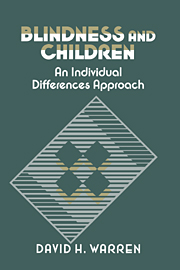Book contents
- Frontmatter
- Contents
- Preface
- Introduction
- Part I Interaction with the physical world
- 1 Perception of the physical world
- 2 Motor and locomotor interaction with the physical world
- 3 Understanding the physical world
- 4 Spatial understanding and spatial behavior
- Part II The acquisition of cognitive skills
- Part III Adapting to the social world
- Part IV Summary
- Conclusion
- References
- Author index
- Subject index
4 - Spatial understanding and spatial behavior
from Part I - Interaction with the physical world
Published online by Cambridge University Press: 02 December 2009
- Frontmatter
- Contents
- Preface
- Introduction
- Part I Interaction with the physical world
- 1 Perception of the physical world
- 2 Motor and locomotor interaction with the physical world
- 3 Understanding the physical world
- 4 Spatial understanding and spatial behavior
- Part II The acquisition of cognitive skills
- Part III Adapting to the social world
- Part IV Summary
- Conclusion
- References
- Author index
- Subject index
Summary
In Chapter 3 we considered evidence about the infant's and child's understanding of the properties of the physical world. The spatial properties of the physical world are properly a subset of this domain. However, we will treat this area in a separate chapter for two reasons. First, this is a relatively large body of work. Second, there may be differences in the acquisition of spatial as opposed to more general concepts. This possibility is well illustrated in a study by Hartlage (1969), who found that young congenitally blind children are not as good at dealing with spatial concepts as they are with nonspatial concepts.
An example of a question that taps spatial concepts is: “Mary is in front of Bill. Bill is in front of John. What is Mary's relationship to John?” A corresponding nonspatial item substitutes “smarter than” for “in front of.” Improvement occurred with increasing age as expected. The results suggest that beginning at grade 5, the blind children are just as able to deal with spatial as with nonspatial concepts. Younger children, though, showed considerably worse performance on spatial than on nonspatial items. Unfortunately, no detail was offered about the variation in performance with degree of visual impairment, intelligence, or gender. The inclusion of the nonspatial questions makes it clear that the children did not have a general problem with concepts, but rather that the problem was specific to spatial concepts.
It is difficult to separate the study of spatial concepts from that of spatial behavior. Spatial behaviors are relatively easy to observe, but spatial concepts are not; the approach taken by Hartlage is a rare example in which concepts are tapped relatively directly.
- Type
- Chapter
- Information
- Blindness and ChildrenAn Individual Differences Approach, pp. 97 - 130Publisher: Cambridge University PressPrint publication year: 1994



